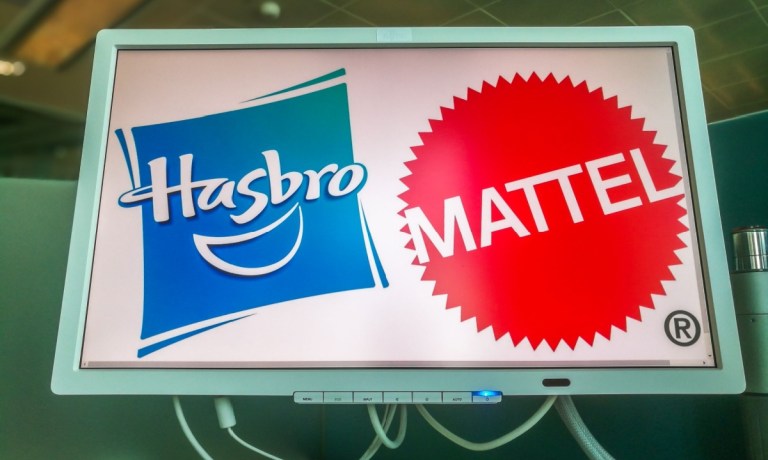
As Hasbro and Mattel revamp their strategies, the toy industry is entering a phase driven by digital transformation and consumer connectivity. Hasbro is capitalizing on its strengths in gaming and licensing, refreshing cherished franchises and expanding its intellectual property through digital platforms.
At the same time, Mattel is preparing for the holiday season by focusing on profitability and product innovation, ensuring its iconic brands resonate with today’s consumers. Both companies are enhancing digital engagement to connect more deeply with consumers.
CEO Chris Cocks emphasized Hasbro’s strategic focus on gaming and licensing during the company’s third-quarter earnings call Thursday (Oct. 24), highlighting how these areas drive profitability and consumer engagement. He pointed to the strength of franchises like Dungeons & Dragons and Monopoly Go!, noting the trend toward digital play is resonating with consumers.
While Hasbro reported a 15% revenue decline, gaming and licensing showed resilience.
Cocks said Hasbro is reinvigorating legacy gaming brands and integrating digital elements to enhance engagement. This is evident in the strong performance of Wizards of the Coast, where both analog and digital formats are thriving. The combination of traditional gameplay with digital expansions is becoming a hallmark of Hasbro’s strategy, catering to a diverse audience that spans generations.
Additionally, licensing has emerged as a component of Hasbro’s growth strategy, Cocks said. The company’s ability to leverage its intellectual property (IP) across various platforms not only boosts brand visibility but also creates new revenue streams. The resurgence of properties like My Little Pony and the integration of licensed products into the market reflect Hasbro’s strength as an IP licensor.
As the toy industry evolves, Hasbro recognizes the need to adapt to changing consumer preferences, Cocks said. The company is shifting its focus toward evergreen brands and high-quality products, responding to consumer demand for meaningful play experiences.
This includes a strategic reduction in lower-margin closeout products, prioritizing profitability over volume. The anticipated success of the new Beyblade series, supported by media partnerships, shows how Hasbro is aligning its marketing efforts with current consumer trends.
“This resilience in our business model has been years in the making, strategically shifting our mix toward games, digital and IP licensing — the future of play,” Cocks said.
“We’re following our fans as they age up and look for their favorite brands on digital platforms. Our key initiatives around digital, licensing, and reinvigorating our product innovation are bearing fruit as we meet fans where they are.”
Meanwhile, Mattel’s third-quarter performance featured a blend of resilience and optimism, particularly as the company prepares for the holiday season.
Despite a 4% decline in net sales, to $1.84 billion, improvements in profitability highlight a strategic focus on enhancing gross margins and generating cash flow. CEO Ynon Kreiz emphasized Mattel’s commitment to its multiyear strategy, aiming to expand its IP-driven toy business and entertainment offerings.
Looking ahead to the fourth quarter, Mattel is optimistic about the holiday season, expecting strong demand supported by effective marketing strategies and a long list of new products. With heightened retail support and increased shelf space, the company is well-prepared to capture consumer interest, Kreiz said.
“From where we sit, the toy industry continues to perform better than initially expected at the start of the year,” Kreiz said. “We expect growth in our business in the fourth quarter and see demand for our products.
“We also are seeing different studies, one that is interesting is the National Retail Federation that recently said that they expect holiday sales to grow between 2.5% to 3.5%, which is generally in line with other excellent forecast that we’re seeing.
“Our own internal research shows that more consumers plan to shop for toys in the fourth quarter, and that the majority of toy shoppers are looking for evergreen well-known brands, which bodes well for Mattel. So, all-in-all, we do expect a good holiday season.”
In digital gaming, Mattel’s ventures are expanding, with plans to integrate more digital experiences tied to physical play. This strategy aims to maintain consumer engagement across platforms, leveraging the popularity of its toy brands in the gaming space.
“Our goal when it comes to digital gaming is to extend the physical play to the virtual world by creating digital games and experiences that drive sustained engagement for fans of all ages,” Kreiz said. “We see our digital gaming strategy as an important growth driver, both for top line and profitability.”